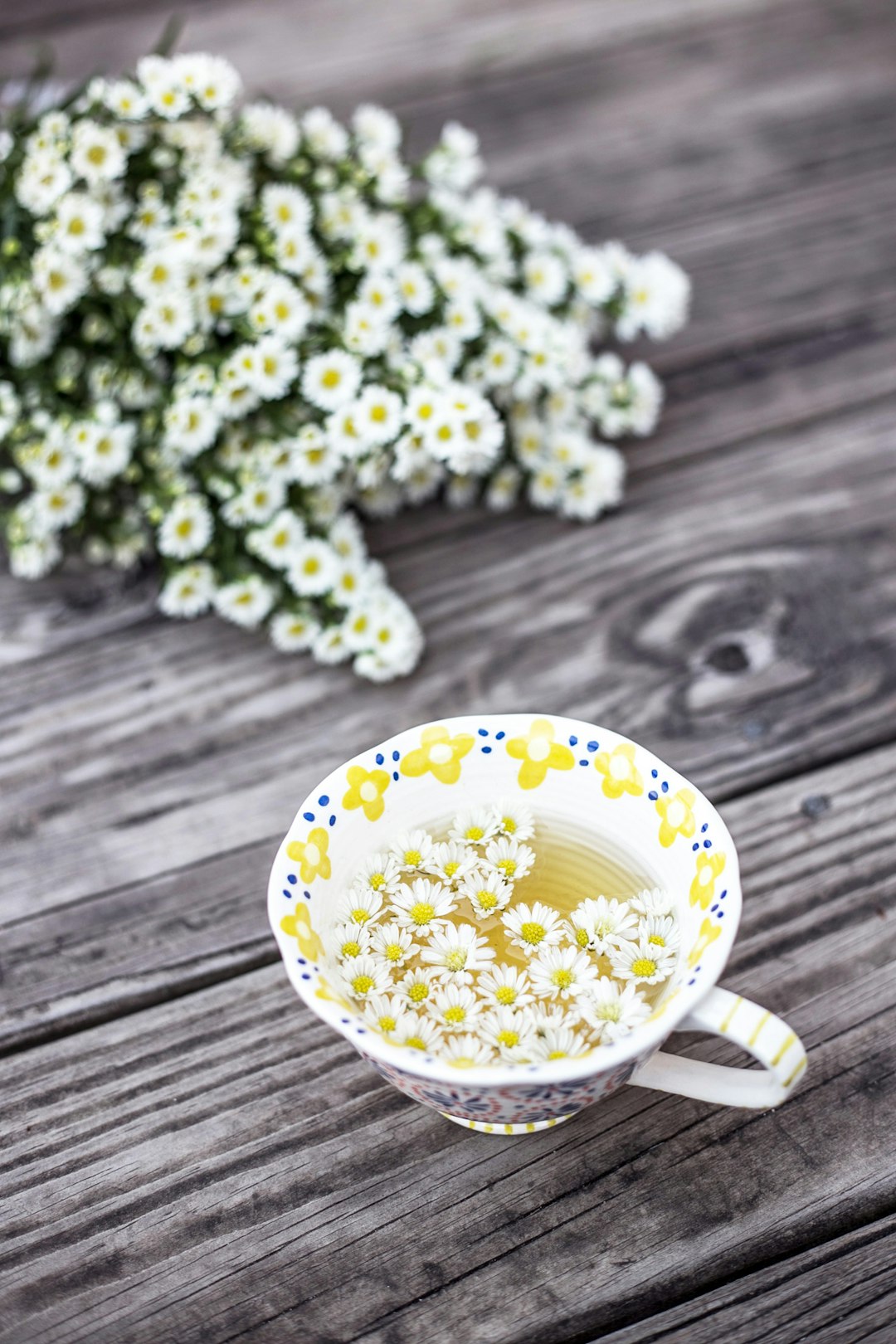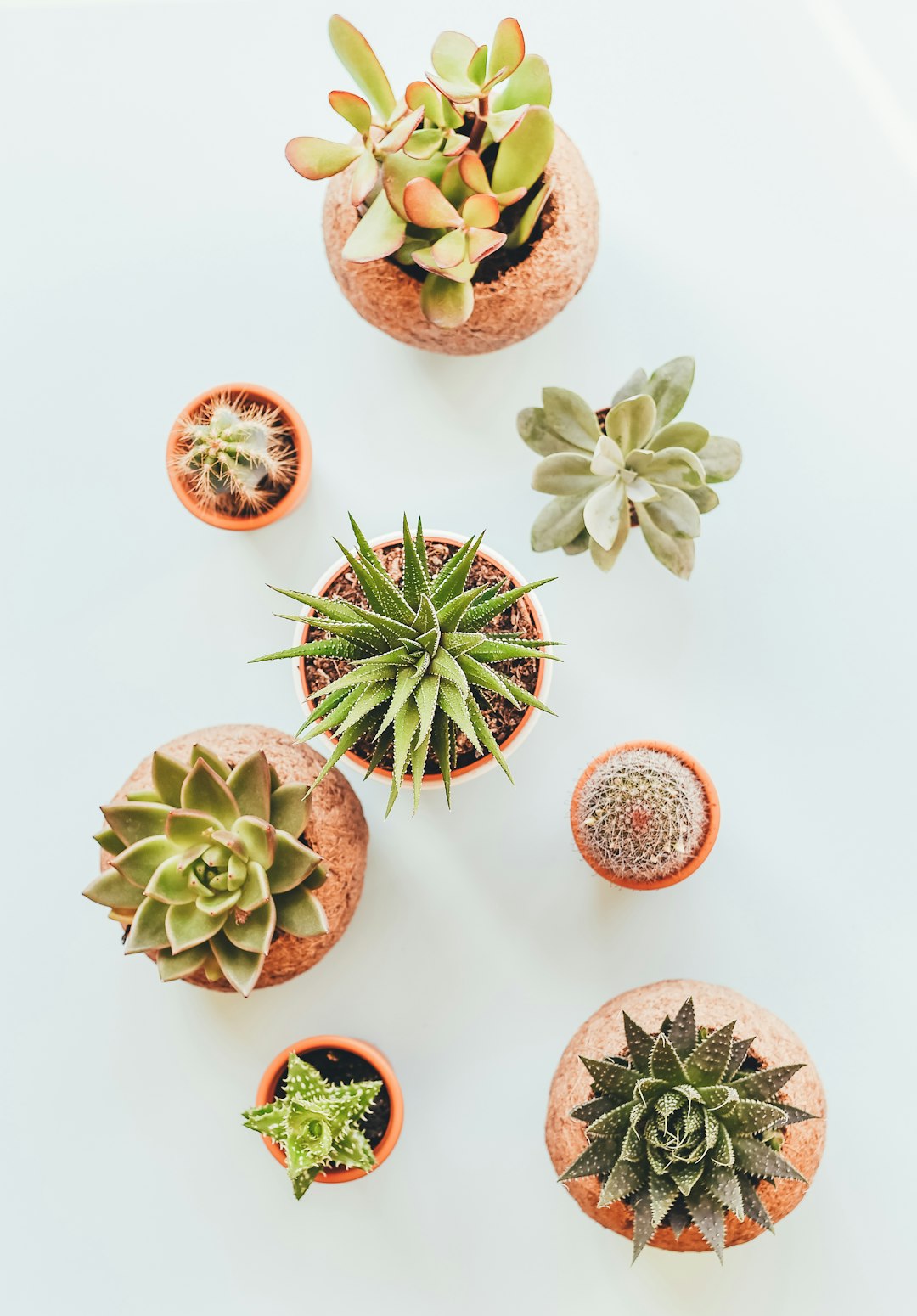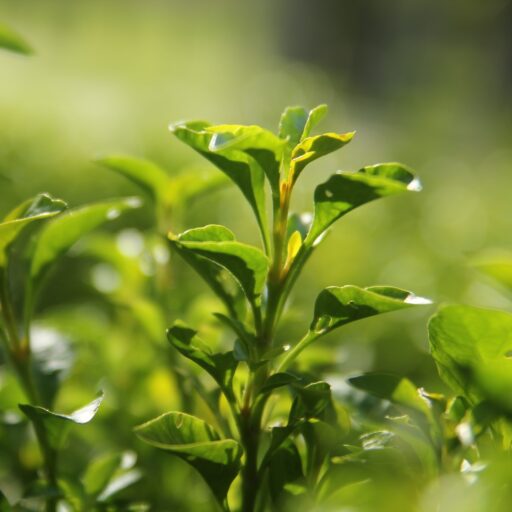Support our educational content for free when you purchase through links on our site. Learn more
Ultimate Guide to Tea Plant Care: 10 Essential Tips! 🌱
Have you ever dreamed of sipping a cup of tea brewed from leaves you grew yourself? Imagine the satisfaction of nurturing your very own tea plants, from seedling to steaming cup! In this comprehensive guide, we’ll take you through 10 essential tips for tea plant care that will transform your gardening game. Whether you’re a seasoned green thumb or just starting out, you’ll discover everything you need to know about growing, pruning, and harvesting your tea plants.
Did you know that tea is the second most consumed beverage in the world, right after water? 🌏 With the right care, you can join the ranks of tea enthusiasts who enjoy the freshest, most flavorful brews right from their gardens. So, grab your gardening gloves and let’s dive into the world of tea cultivation!
Key Takeaways
- Sunlight & Soil: Tea plants thrive in part sun and acidic soil with a pH of 4.0 to 5.5.
- Watering: Keep the soil moist but not soggy; think of a wrung-out sponge!
- Pruning: Regular pruning encourages bushier growth and enhances flavor.
- Fertilization: Feed your plants with a balanced fertilizer during the growing season for optimal health.
- Pest Management: Stay vigilant against pests like aphids and spider mites to keep your plants healthy.
Ready to start your tea-growing adventure? 👉 Shop tea plants on:
Let’s get growing! 🌿🍵
Table of Contents
- Quick Tips and Facts
- The Fascinating History of Tea Plants
- Understanding the Types of Tea Plants
- Mastering the Art of Pruning Your Tea Plant
- Propagating Camellia Sinensis: A Step-by-Step Guide
- Potting and Repotting Camellia Sinensis: Best Practices
- Overwintering Your Tea Plant: Tips for Cold Weather Care
- Identifying and Managing Common Pests and Diseases
- How to Encourage Your Tea Plant to Bloom
- Essential Nutrients for Thriving Tea Plants
- The Perfect Environment: Light, Soil, and Water Requirements
- Harvesting Your Tea Leaves: Timing and Techniques
- Brewing Your Own Tea: From Plant to Cup
- Conclusion
- Recommended Links
- FAQ
- Reference Links
Quick Tips and Facts 🌱☕
Want to dive right in? Here’s the short version of tea plant care:
- Sunlight: ☀️ Part sun, part shade. Think Goldilocks – not too much, not too little.
- Water: 💧 Keep the soil moist but not soggy. Imagine a wrung-out sponge.
- Soil: 🌱 Acidic is key! Aim for a pH of 4.0 to 5.5. Think citrus fruits, not potatoes.
- Fertilizer: 🌿 Feed regularly during the growing season. A balanced diet is crucial, just like for us!
- Pruning: ✂️ Shape in late winter or early spring. Think of it as a haircut for your plant.
Intrigued? Read on to become a tea plant pro! You can also find out more about Growing Teas.
The Fascinating History of Tea Plants 🌏🕰️

Before we get our hands dirty (figuratively, for now!), let’s take a trip back in time. The story of tea is as rich and complex as its flavor. Legend has it that tea was discovered in China over 5,000 years ago by Emperor Shen Nong. Whether it was a happy accident or a divine intervention, we’re eternally grateful! 🍵
From its humble beginnings as a medicinal drink, tea captivated emperors and commoners alike. It spread like wildfire along trade routes, eventually conquering the globe. Today, tea is the second most consumed beverage in the world, second only to water. Talk about a legacy! 🤯
Want to delve deeper into the captivating History of Tea? We’ve got you covered!
Understanding the Types of Tea Plants 🌿🔍
Not all tea plants are created equal. Just like there are different breeds of dogs, there are different varieties of Camellia sinensis, the plant that gives us our beloved tea.
Here are two major players:
- Camellia sinensis sinensis: This variety hails from China and is known for its smaller leaves and remarkable cold tolerance. It’s the source of green and white teas, among others.
- Camellia sinensis assamica: Originating in the Assam region of India, this variety thrives in tropical climates and boasts larger leaves. It’s the backbone of black tea production.
Knowing your tea plant variety is like knowing your coffee beans – it helps you understand its needs and potential.
Mastering the Art of Pruning Your Tea Plant ✂️🌱
Pruning might seem intimidating, but trust us, it’s like giving your tea plant a much-needed spa day! It encourages healthy growth, prevents legginess, and keeps your plant looking its best.
Here’s the gist:
- When to prune: Late winter or early spring, after the blooming period, is prime time.
- How to prune: Use sharp, clean pruning shears to remove dead, damaged, or crossing branches. Don’t be afraid to be bold – you can prune up to half the foliage of young plants to encourage a bushier shape.
Think of it as sculpting your tea plant into a masterpiece! 🎨
Propagating Camellia Sinensis: A Step-by-Step Guide 🌱👶🌱
Ready to expand your tea garden? Propagating your own tea plants is incredibly rewarding and easier than you might think! Here’s a step-by-step guide using the single leaf cutting method:
- Take your cuttings: During the growing season (March to September), select healthy, young stems. Cut just below a leaf node, making sure each cutting has at least one leaf.
- Prepare the cuttings: Remove the lower leaves, leaving only one or two at the top. Dip the cut end in rooting hormone (optional but helpful!).
- Plant the cuttings: Fill a small pot with a well-draining potting mix. Make a hole with a pencil and gently insert the cutting.
- Provide warmth and humidity: Cover the pot with a plastic bag or humidity dome to create a mini greenhouse. Place it in a warm, bright location out of direct sunlight.
- Be patient: Roots should develop in about four weeks. Once you see new growth, you can gradually acclimate your plant to normal conditions.
Congratulations, you’ve just multiplied your tea treasures! 🎉
Potting and Repotting Camellia Sinensis: Best Practices 🏡🌱
Whether you’re growing your tea plant indoors or outdoors, choosing the right pot and knowing when to repot are crucial for its well-being.
- Choosing a pot: Opt for a container that’s at least twice as wide and deep as the root ball. Make sure it has drainage holes to prevent waterlogging.
- Potting mix: Tea plants thrive in well-draining, acidic soil. You can use a pre-mixed azalea or rhododendron potting mix, or create your own by combining peat moss, perlite, and compost.
- Repotting: Tea plants typically need repotting every three to four years, or when you see roots circling the bottom of the pot. Choose a slightly larger pot and refresh the potting mix.
Remember, a happy root system equals a happy tea plant! 😄
Overwintering Your Tea Plant: Tips for Cold Weather Care ❄️🛡️
If you live in a region with frosty winters, you’ll need to give your tea plant some extra TLC during the colder months.
Here’s how to keep it cozy:
- For potted plants: Bring them indoors to a cool, bright location. Aim for temperatures around 50°F. Water sparingly and avoid fertilizing during dormancy.
- For in-ground plants: Apply a thick layer of mulch around the base to insulate the roots. You can also wrap the plant in burlap for added protection.
With a little care, your tea plant will weather the winter storm and emerge stronger in spring! 💪
Identifying and Managing Common Pests and Diseases 🐛🚫
Even with the best care, tea plants can sometimes fall victim to pests and diseases. But don’t worry, we’ve got your back!
Here are some common culprits and how to deal with them:
- Pests: Keep an eye out for aphids, spider mites, scale, and caterpillars. You can often dislodge them with a strong jet of water or use insecticidal soap for more persistent infestations.
- Diseases: Leaf spot, anthracnose, and root rot are potential threats. Ensure proper air circulation, avoid overwatering, and treat with fungicides if necessary.
Remember, prevention is always better than cure. Regularly inspect your tea plant for any signs of trouble and address them promptly. 🔎
How to Encourage Your Tea Plant to Bloom 🌸🌺
Tea plant flowers are a sight to behold – delicate, fragrant, and a testament to your plant’s happiness.
Here are some tips to encourage blooming:
- Age matters: Tea plants typically start blooming when they’re around four years old.
- Phosphorous is key: Use a fertilizer with a higher phosphorous content (the middle number in the NPK ratio) to promote flower development.
- Don’t over-prune: While pruning is essential, avoid cutting back too much, as this can reduce flower production.
With a little patience and the right care, you’ll be rewarded with a beautiful floral display! ✨
Essential Nutrients for Thriving Tea Plants 🌿💪
Just like us, tea plants need a balanced diet to thrive. Here are the essential nutrients they crave:
- Nitrogen (N): For lush, green growth.
- Phosphorous (P): For strong root development and blooming.
- Potassium (K): For overall plant health and disease resistance.
You can provide these nutrients through regular fertilization. Choose a balanced fertilizer or opt for organic options like compost, blood meal, or fish emulsion.
Remember, feeding your tea plant is like fueling its growth engine! 🚀
The Perfect Environment: Light, Soil, and Water Requirements ☀️💧🌱
Creating the ideal growing environment is crucial for your tea plant’s success. Here’s a breakdown of its basic needs:
- Light: Tea plants prefer part sun to part shade. Aim for 4-6 hours of direct sunlight per day, ideally in the morning.
- Soil: Well-draining, acidic soil is a must! A pH of 4.0 to 5.5 is ideal. You can amend your soil with peat moss, compost, or elemental sulfur to increase acidity.
- Water: Keep the soil consistently moist but not waterlogged. Water deeply when the top inch of soil feels dry to the touch.
Think of it as providing your tea plant with a five-star hotel experience! 🏨
Harvesting Your Tea Leaves: Timing and Techniques 🍃✂️
The moment you’ve been waiting for – harvesting your very own tea leaves! Here’s how to do it right:
- Timing is everything: The best time to harvest is in the early morning, after the dew has dried but before the sun gets too intense.
- Focus on new growth: Pluck the tender, new leaves at the top of the plant. These are known as “flush” leaves and contain the highest concentration of flavor compounds.
- Don’t be greedy: Leave some leaves on the plant to ensure its continued growth. A good rule of thumb is to harvest no more than one-third of the new growth.
Congratulations, you’re now a tea farmer! 👨🌾👩🌾
Brewing Your Own Tea: From Plant to Cup 🍵✨
You’ve nurtured your tea plant, harvested the leaves, and now it’s time to savor the fruits (or rather, leaves) of your labor!
Here’s a simple guide to brewing your homegrown tea:
- Rinse the leaves: Gently rinse the freshly harvested leaves under cool water.
- Heat the water: Bring fresh, filtered water to a simmer. The ideal temperature varies depending on the type of tea you’re making.
- Steep the leaves: Place the leaves in a teapot or infuser and pour the hot water over them.
- Steep to taste: Steeping time also varies depending on the type of tea and your personal preference. Start with 3-5 minutes and adjust accordingly.
- Strain and enjoy: Once steeped, strain the leaves and savor the fresh, flavorful tea you’ve grown yourself!
There’s nothing quite like sipping a cup of tea made with leaves from your own backyard. It’s a true labor of love! ❤️
Conclusion 🎉🍵

Congratulations, tea enthusiasts! You’ve journeyed through the ins and outs of tea plant care, from understanding the different varieties to brewing that perfect cup. 🌿✨
To recap, here are the positives of growing your own tea plants:
- Freshness: Enjoy the freshest tea possible, right from your garden.
- Customization: Experiment with different varieties and flavors.
- Satisfaction: There’s immense joy in nurturing a plant and enjoying its bounty.
However, there are a few negatives to consider:
- Time and Patience: Growing tea plants requires commitment and time before you can harvest.
- Climate Sensitivity: They can be finicky about their growing conditions, especially in colder climates.
Despite these challenges, we wholeheartedly recommend diving into the world of tea cultivation. With the right care and attention, you’ll be rewarded with a delightful and aromatic experience that’s hard to beat! So, grab your gardening gloves and get started! 🌱💪
Recommended Links 🛒📚
-
👉 Shop Tea Plants on:
-
Books on Tea Cultivation:
FAQ 🤔🌱

How often should I water my tea plant to ensure optimal growth and tea production?
Optimal Watering Frequency
Tea plants thrive in consistently moist soil. Water your plant when the top inch of soil feels dry. In general, this could mean watering every 2-3 days during the growing season, and less frequently during dormancy. Remember, overwatering can lead to root rot, so always check the soil moisture first! 💧
What type of soil and fertilizers are best suited for tea plant care and cultivation?
Soil and Fertilizer Recommendations
Tea plants prefer well-draining, acidic soil with a pH of 4.0 to 5.5. A mix of peat moss, compost, and perlite works wonders. For fertilizers, use organic options like compost or fish emulsion during the growing season. A balanced NPK fertilizer (10-10-10) can also be beneficial, especially if you want to encourage leaf growth. 🌱
How much sunlight does a tea plant require, and can it thrive in indoor conditions?
Sunlight Needs
Tea plants enjoy 4-6 hours of sunlight daily. They thrive in part sun to part shade conditions. If you’re growing indoors, place them near a bright window but avoid direct afternoon sun, which can scorch the leaves. 🌞
What are the common pests and diseases that can affect tea plants, and how can I prevent them?
Pest and Disease Management
Common pests include aphids, spider mites, and scale. To prevent infestations, regularly inspect your plants and maintain good air circulation. For diseases like root rot and leaf spot, ensure proper watering practices and avoid overcrowding your plants. If you spot any pests, consider using insecticidal soap or neem oil as a natural remedy. 🐛🚫
Can I grow a tea plant in a container, and what are the benefits of doing so?
Container Growing Benefits
Absolutely! Growing tea plants in containers is a fantastic option, especially for those in colder climates. Containers allow for better control over soil conditions and make it easier to move the plant indoors during winter. Plus, they can be a beautiful addition to your patio or balcony! 🏡
Read more about “What Zones Can Tea Plants Grow In? 🌱 Top 5 Regions Revealed …”
How do I prune my tea plant to promote healthy growth, encourage leaf production, and enhance flavor?
Pruning Techniques
Prune your tea plant in late winter or early spring after the blooming period. Remove dead or crossing branches and shape the plant to encourage bushier growth. Don’t hesitate to cut back up to half of the foliage on younger plants to promote new growth. This will also enhance the flavor of the leaves! ✂️
What are the ideal temperature and humidity levels for tea plant care, and how can I replicate these conditions in my garden or indoor space?
Temperature and Humidity Requirements
Tea plants thrive in temperatures between 70°F and 85°F during the growing season and prefer humidity levels around 50-70%. To replicate these conditions indoors, consider using a humidifier or placing a tray of water near the plant. Outdoors, ensure they are sheltered from extreme weather conditions. ❄️🌡️
Reference Links 📚🔗
- The Spruce: Camellia Sinensis Tea Plant Care Guide
- Jomo Studio: Green Tea Plant
- Minto Island Tea Company: Grow Tea
With all this knowledge, you’re now equipped to cultivate your own tea garden! Happy growing! 🌿🍵



